Continuing our series on Croatia’s Michelin-starred restaurants, we’re travelling further north up the Dalmatian coast to visit Pelegrini in lovely Šibenik, under the direction of self-taught chef Rudi Štefan.
Born in Šibenik, Rudolf Štefan graduated from the Faculty of Tourism and Hospitality of Opatija… with a degree in Economics. Having grown up in an environment of good food and restaurants, the restaurant industry seemed a logical career choice for him. He opened his first business in the 1990s: a beach bar on Vis island. Not a tiki hut serving mojitos and piña coladas, mind you, but a place that offered 25 wines by the glass (way more than other Croatian restaurants at the time, and even today in most cases) and plates of prosciutto and cheese.
Eventually, Štefan got tired of running a beach bar and decided to acquire a larger place to call his own. In 2006, he purchased the dilapidated Pelegrini Palace, which would be restored over several years. He opened the restaurant in 2007, but success didn’t happen overnight. Štefan wanted to serve contemporary food with fresh, local ingredients (prepared out of a tiny kitchen behind the bar) but couldn’t find a chef who met his expectations. What did he do? He chose to become a chef himself.
And so, he underwent basic cooking training and sought internships in fine-dining restaurants abroad. Over the years, he interned at Torre del Saracino in southern Italy and Arzak in Basque country, places with two and three Michelin stars, respectively. Then he started sending his cooks to do internships abroad too, so they could gain the experience necessary to help him achieve his vision. From an ambitious konoba (the traditional Croatia tavern), the restaurant progressively morphed into a fine-dining establishment, and took advantage of its central location facing the cathedral of St. James, with tables overflowing onto the steps towards the Square of the Republic of Croatia in the summer months.
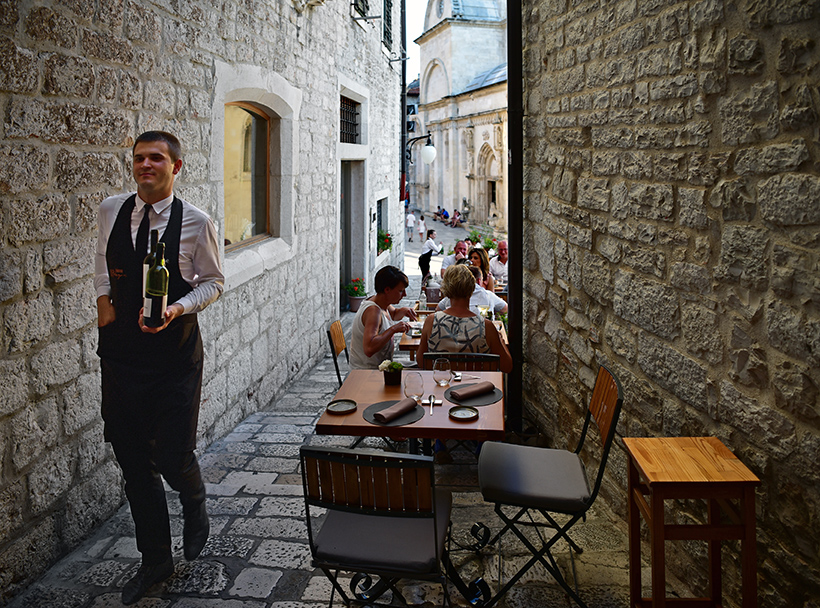
Štefan insisted on sourcing ingredients from both land and sea, representing the terroir of central Dalmatia. He began establishing long-term relationships with suppliers, producing his own olive oil (using olives picked by the entire Pelegrini crew), baking his own bread, helping make prosciutto, and collaborating with nearby Skradin’s Alen Bibić for the wine program.
All these efforts didn’t go unnoticed. From 2015 on, Pelegrini was named Best Restaurant in Croatia by local media for several years. Then in 2018, as the second Croatian edition of the Michelin Guide was released, Pelegrini and Restaurant 360 in Dubrovnik joined Monte in Rovinj as the country’s only starred establishments.
My visit to Pelegrini actually dates to the summer of 2017, before the Michelin star. Back then, one could choose between a blind tasting menu and a 5- or 6-course prix fixe composed from any among 27 dishes; wine pairings were also available. Looking at the restaurant’s web site today, the format has remained mostly unchanged, save for the smaller number of à la carte options (I’ve also heard that Rudi Štefan’s cuisine now aims more at creating canonical Dalmatian gastronomy). I got to try a dozen plates during my visit, but I must warn you that because the chef favors minimalist dish names whose length rarely exceeds two or three words, I had to rely heavily on my own impressions; I’m also realizing that my notetaking wasn’t nearly as good back then as it is now (possibly because my daughter is much less distracting at 12 years old than she was at 6…)!
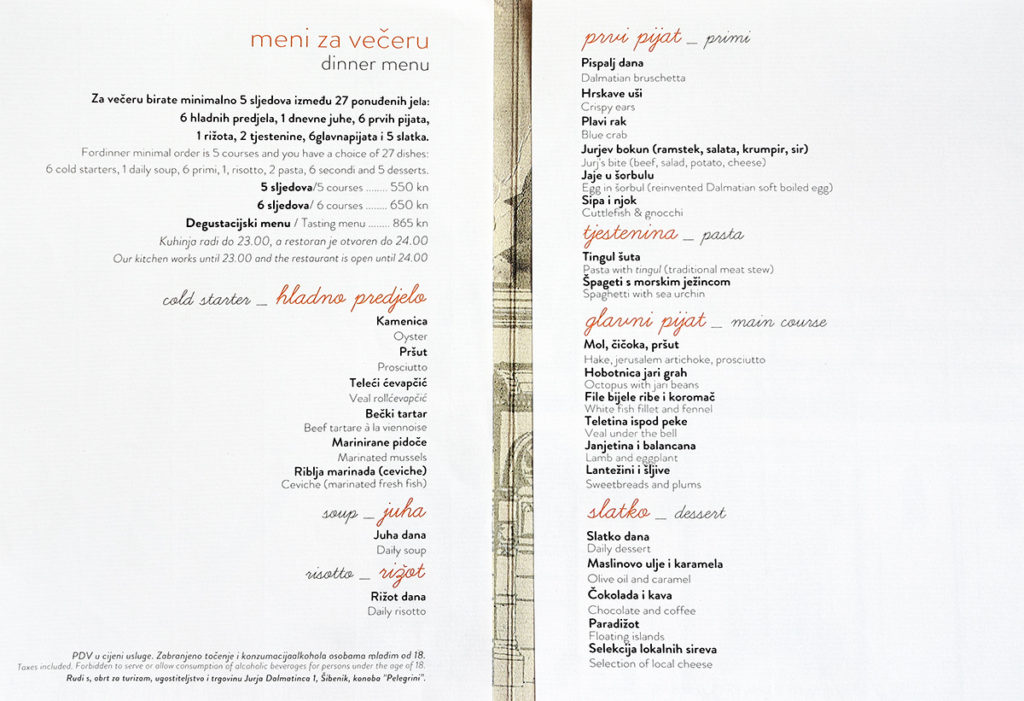
We start the meal with an amuse-bouche of creamy white fish and peach preserves on a cracker. It’s an interesting pairing, and it works well.
We also get an assortment of breads: a rustic sourdough loaf, a focaccia, and several other little buns. The homemade sourdough bread tastes very good indeed, though I wish the crumb was a bit airier (or the holes more evenly distributed). This all comes with a very pungent olive oil from Skradin, much to my liking, and a tangy fresh cow’s milk cheese with a texture similar to thick yogurt.
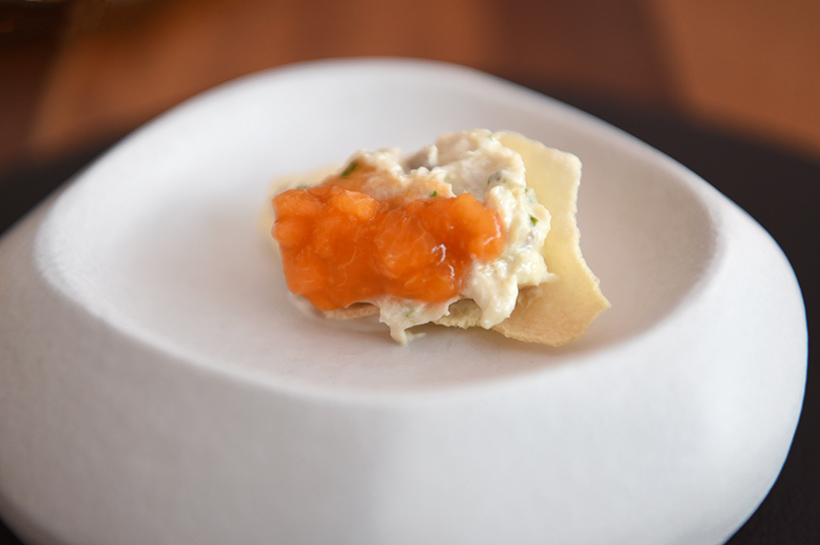
Next, the local oysters, which are just that: three flat half-shells served on ice. Together with the bread and a glass of white wine, that’s all one really needs! I find that the mollusks, though good overall, don’t have enough briny flavor. (As a point of comparison, a 2021 menu I found online features a single oyster served with ginger and lime granita.)
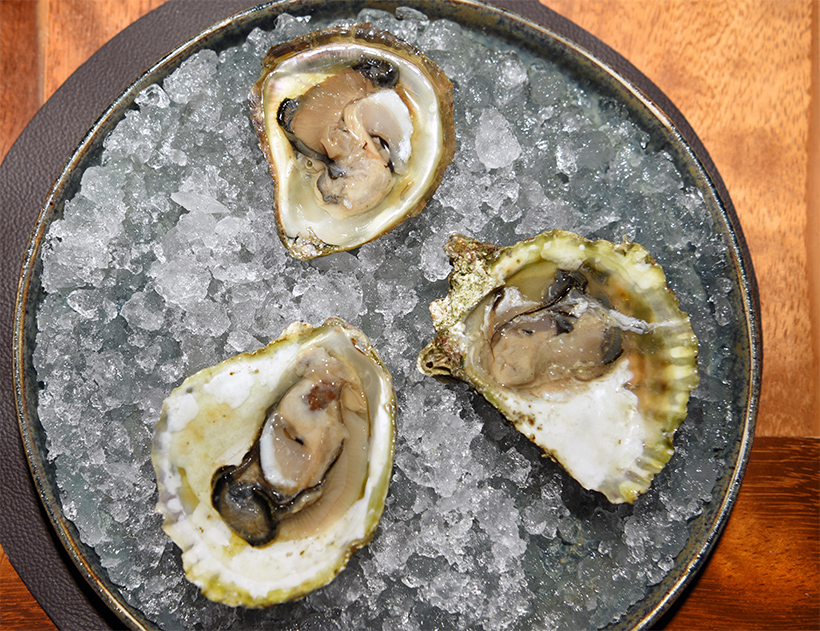
Despite the somewhat bizarre plating, the cuttlefish and gnocchi are a success. The sweet cuttlefish is sliced very thinly, and arranged into heaps next to two gnocchi, dense little pillows made with cuttlefish ink, scattered on a spiral of cream sauce sprinkled with salmon roe.
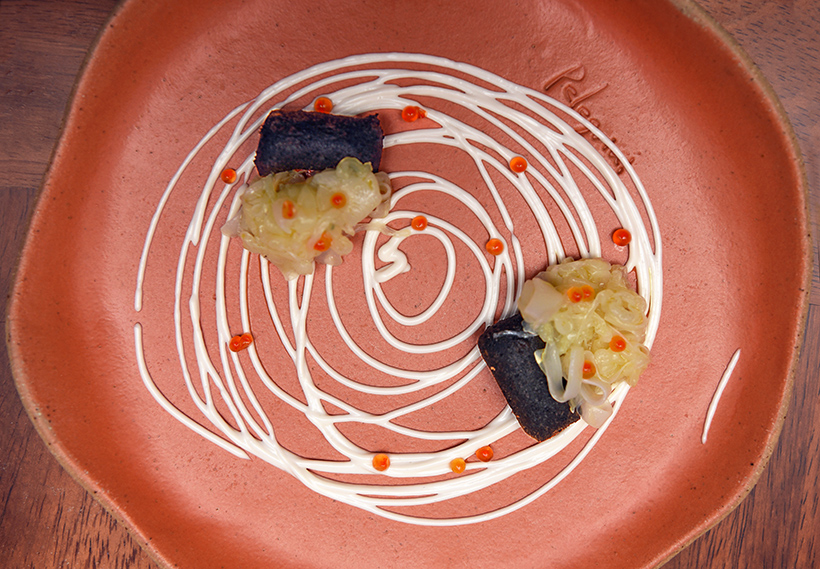
A playful re-interpretation of the ubiquitous ćevapi (skinless grilled sausages), the veal ćevapčić is really a veal tartare served at room temperature. The well-seasoned meat is served on a bed of pickles and something crunchy and topped with mustard caviar, dill, and wasabi mayo. Though not terribly original, it’s well executed and it offers a great variety of textures.
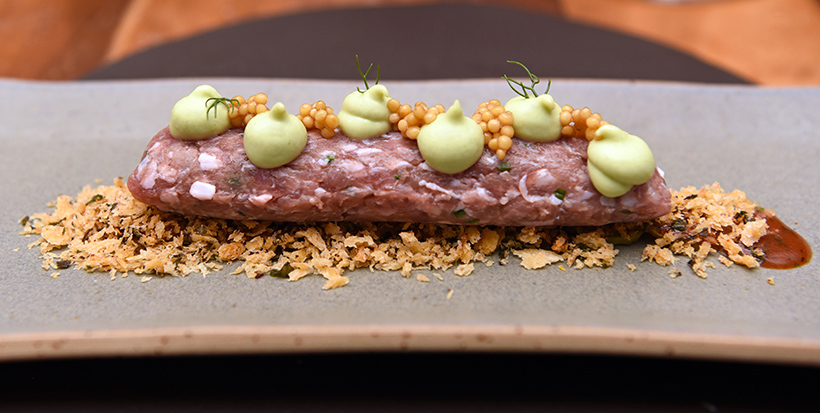
The risotto of the day consists of rice cooked to perfection and mixed with a lot of cheese, served over a bed of zucchini purée, and topped with chopped white fish. I also remember tasting honey and lemon.
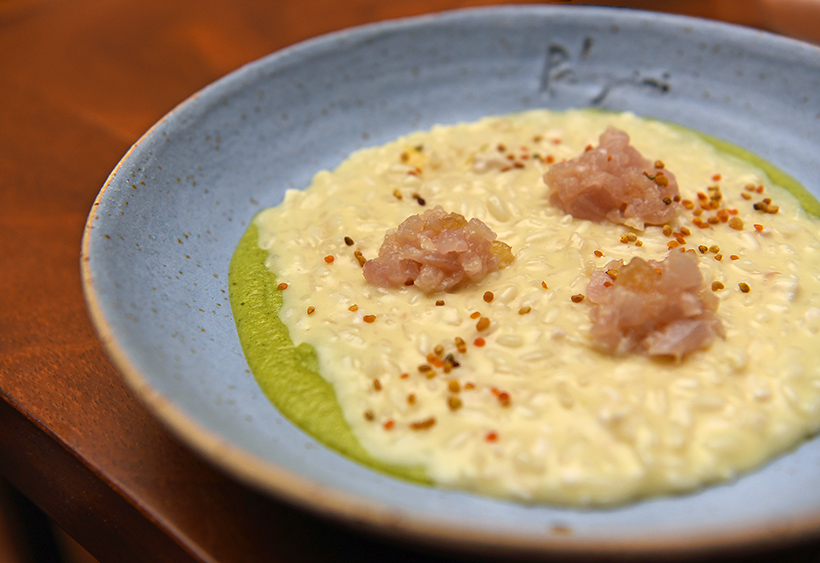
The marinated mussels are also excellent. The mussels, gently cooked and marinated in a very slightly acidic liquid, are tossed with a brunoise of mixed vegetables (including red pepper) and chives. They’re served on top of a mussel purée drizzled with olive oil.
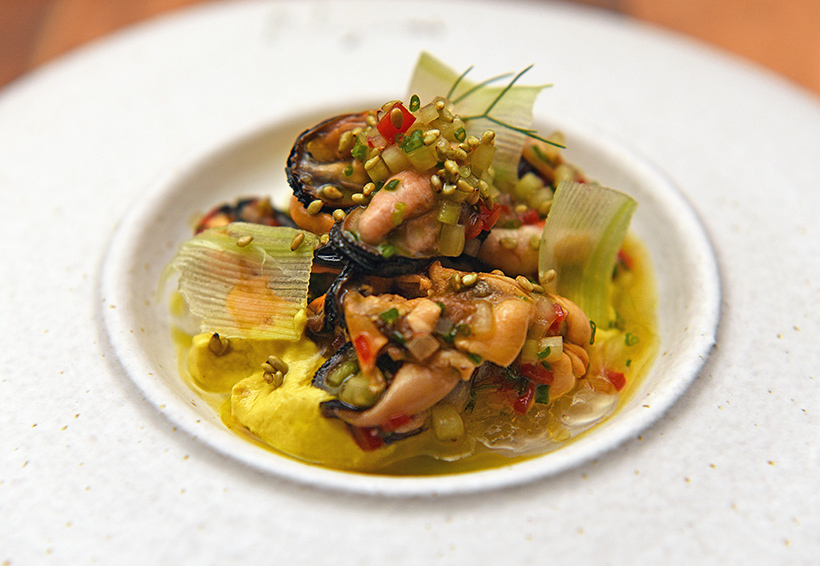
The pasta with tingul combines a traditional meat stew (the tingul, usually made with chicken or lamb) with cuttlefish ink gemelli pasta. Here, the tingul is made of very tender chicken pulled into small pieces and coated in a reduction sauce with carrots and tomatoes. The dish is topped with parmesan crisps that are a bit too salty. (That 2021 menu lists another tingul, of slow-cooked duck served with black pasta and duck prosciutto.)

The octopus with grass peas is superbly cooked, probably sous-vide at low temperature. Each tender chunk of tentacle is garnished with a Thai basil leaf and rests on a piece of tomato and an overly generous bed of grass pea purée. This is my first encounter with grass pea, a hardy pulse known to cause paralysis of the lower body when consumed in large quantities for extended periods! Unfortunately, the purée is way too salty to appreciate the taste. There are also dots of a subtle olive mousse that goes well with the octopus.
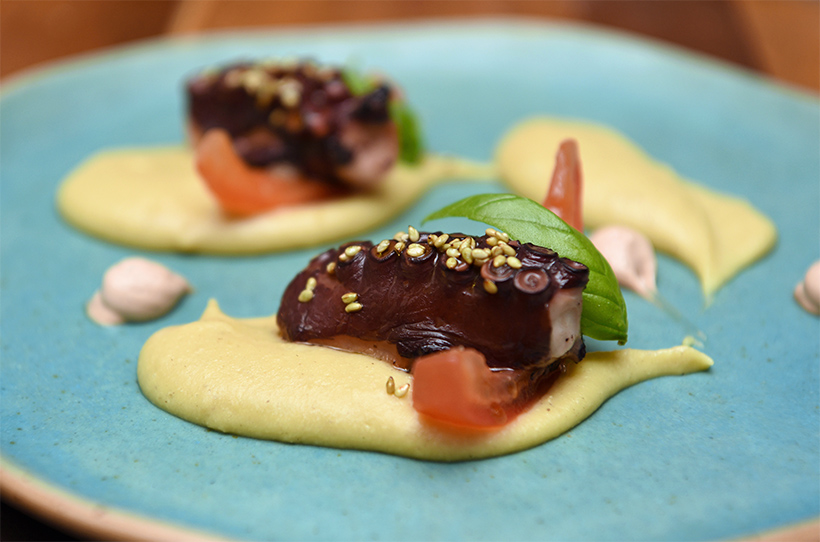
The hake, jerusalem artichoke, and prosciutto arrive with what might be the most flavorful sunchoke purée I’ve eaten in my life. The prosciutto tends to overpower the fish that’s wrapped in it, but hake has very little taste to start with. A tapioca chip adds some crispiness to the dish and is best consumed with the slightly acidulous spinach salad next to it. Two somewhat unnecessary dots of porcini purée complete the plate.
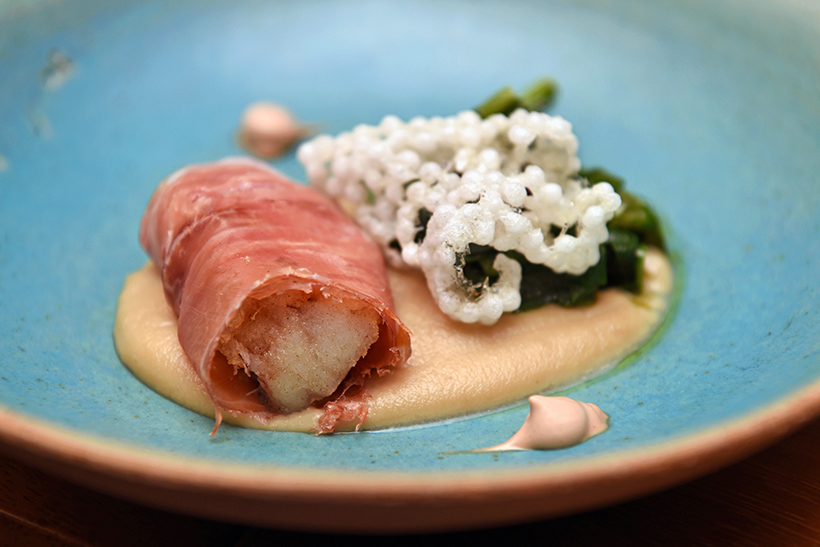
The veal under the bell is the chef’s modernist re-interpretation of the classic peka. Here the bell consists of a glass dome filled with smoke coming from a smoking gun – a gimmicky version, in a way, of the Michelin-beloved ritual of pouring sauce tableside. As is often the case, the quick smoke tends to be a bit acrid and too aggressive. The veal is well cooked, but I’m actually surprised it’s not more tender – it’s lacks the wow factor you expect when a fine-dining restaurant serves a super-traditional dish. The meat is served on a bed of sweet onion purée with some very tender carrots. It’s topped with a julienne of zucchini (that seems to have absorbed more smoke) and little potato purée croquettes. All of these elements echo the typical peka garnishes, cleverly revisited.
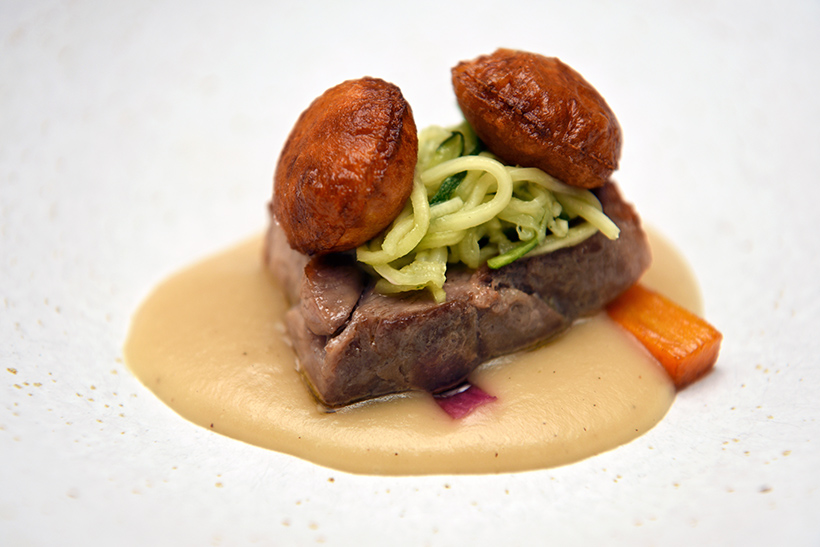
The dessert of the day is a Bundt-shaped carob cake with blackcurrant coulis. The cake, filled with a goat’s milk panna cotta, doesn’t taste enough like carob. Apparently it’s mixed with chocolate, which I find ridiculous since carob is typically a chocolate substitute. Then there are strange little balls of apple with a weird medicinal taste. The waiter also mentioned olive oil but I can’t tell you where it’s hiding.
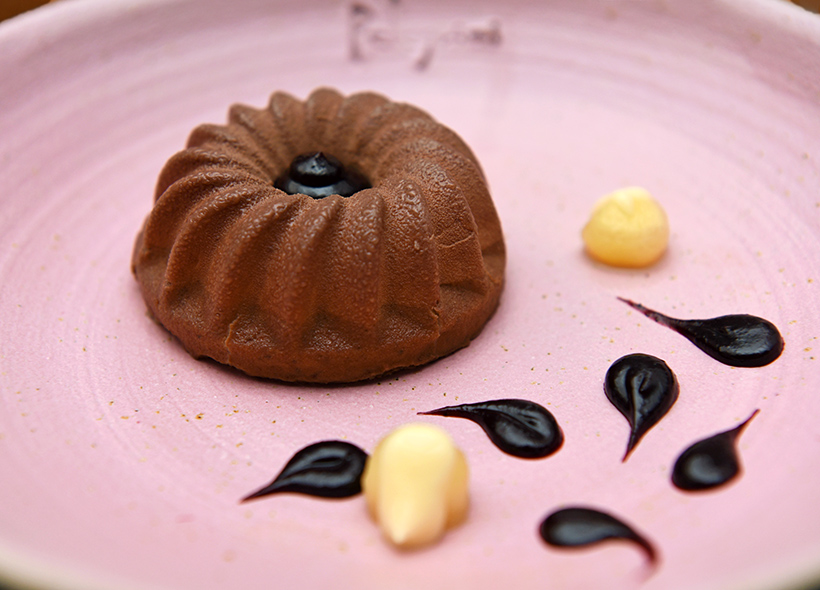
The olive oil and caramel dessert is a sweet, mild mousse with no cake element, topped with mango syrup. The latter is fairly subtle, but it’s an interesting pairing. The mousse sits in a puddle of sauce that’s difficult to describe but is dominated by olive oil, which makes it quite pungent if you eat a lot of it by itself but goes well with the mild caramel. The whole lacks a bit of texture contrast (it needs something crunchy) but the flavors are excellent.

Sadly, while I’m sure we paired our meal with wine, I didn’t take any notes about it. (I will, however, write a separate post about Bibich winery).
It probably doesn’t make sense for me to judge a restaurant almost six years after having dined there, especially with the intervening pandemic times. I’ll simply say that despite a few execution flaws, these were some very inspiring dishes. And you can expect some recipes adapted from my meal very soon!
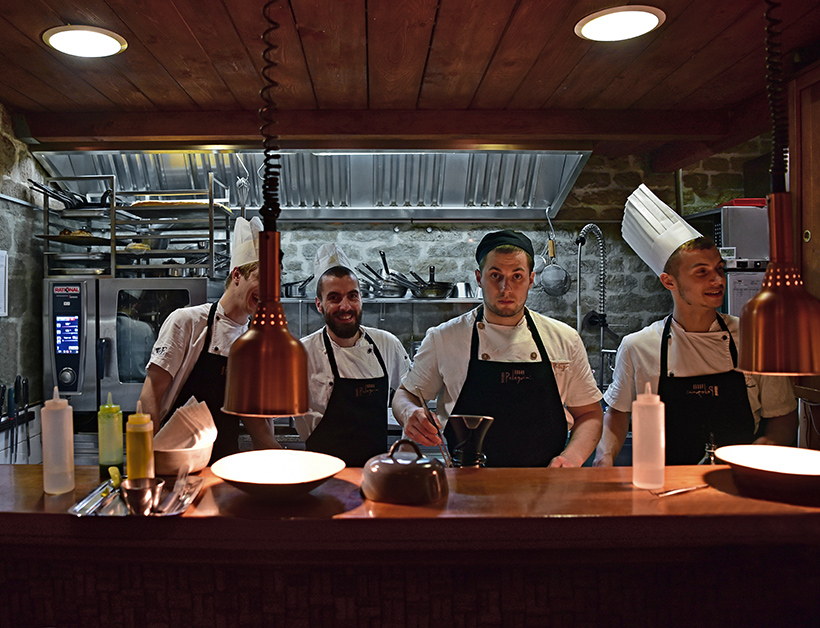


1 comment
It’s wonderful to see such high quality, innovative Croatian cuisine being featured. I would love to visit Croatia someday just to dine at Pelegrini and other restaurants focusing on thoughtful, creative interpretations of local flavors.